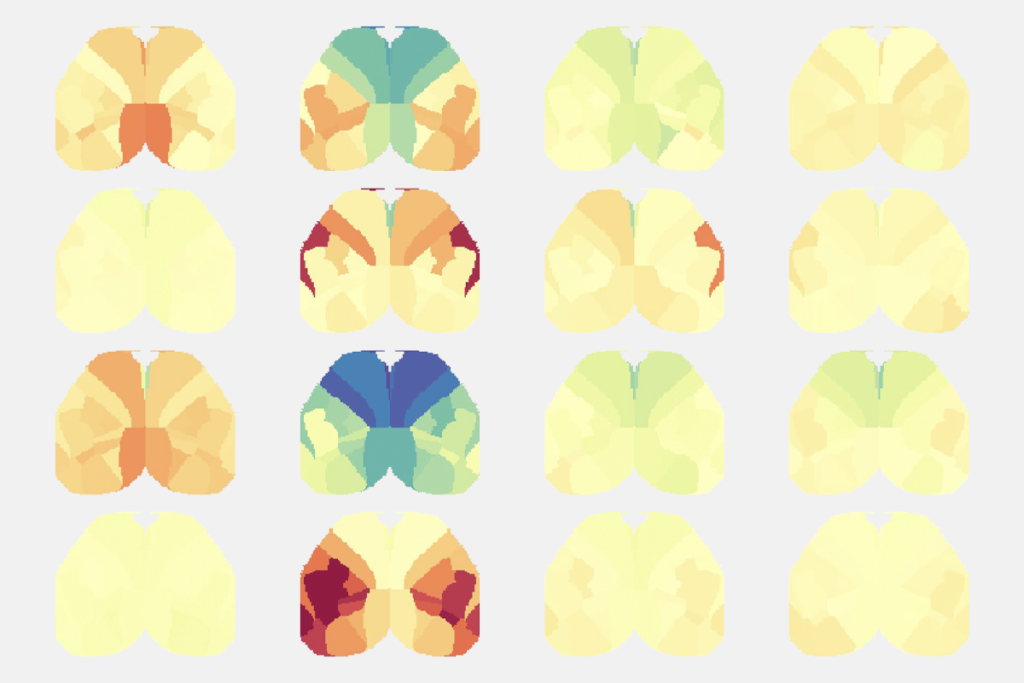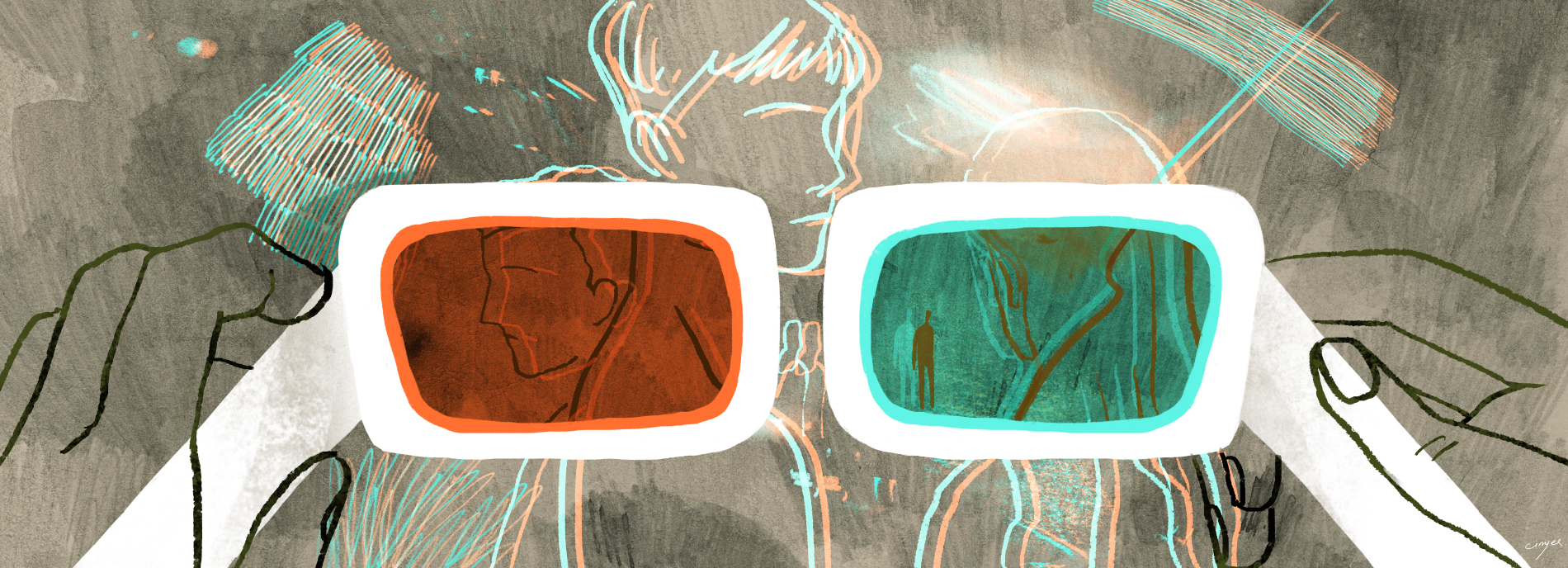
The promise of scientific partnerships with people on the spectrum
Five collaborations involving autistic scientists and experts are advancing autism research, from lending support for theories of the condition to shoring up trials of new treatments.
F
or years, systems scientist Dora Raymaker and physician Christina Nicolaidis have spent Thanksgiving, Christmas and New Year’s Eve together. Though they are not exactly family, they are close, both figuratively and (in pre-pandemic times) literally: They are research collaborators, and their offices at Portland State University in Oregon are next to each other. Raymaker, who is autistic, and Nicolaidis, who is not, are best friends and use the same words to describe their connection: “We share a brain.”Partnerships like that of the Portland pair are key to advancing autism research. In addition to the bond between Raymaker and Nicolaidis, what makes the collaboration work is that their brains are not the same. Raymaker brings a perspective to their projects that is different from that of a non-autistic person, and she acts as a bridge between the autism and research communities. To Nicolaidis, Raymaker’s input is critical to making their research relevant to the people it is designed to help.
Autistic people have shaped science in many ways. Some join studies or turn to advocacy work. But others, like Raymaker, choose a direct route and become full-time scientists or consultants who collaborate with non-autistic scientists on studies. In this story, Spectrum profiles five pairs who have deepened our understanding of autism and opened up new lines of inquiry. They aim to improve healthcare delivery to autistic people, clarify public attitudes toward autism and intellectual disability, and make participation in clinical trials easier for autistic people, among other goals.
Back when Raymaker and Nicolaidis started working together, few people believed in the value of partnering with autistic people, the scientists say. “The work Christina and I have done,” Raymaker says, shows that “not only is this a thing that’s possible, but it actually improves your research.’”
Translation team:
I
n 2005, Nicolaidis joined a local parent listserv called the Portland Aspergers Network. Her 2-year-old son had been diagnosed with autism in April 2004, and she turned to the forum for help and community. One particular listserv member stood out — an autistic adult who offered advice to worried parents by recounting personal experiences and sharing solutions. Nicolaidis’ son was too young for most of the tips to be relevant, but she saved the posts to refer to as he grew up. In early 2006, she decided she wanted to meet their author.The listserv contributor seemed interested in science, so Nicolaidis suggested setting up a journal club to discuss autism research. Raymaker, who was pursuing a master’s degree in systems science at Portland State University, quickly signed up. “She not only bit, she offered to have it in her living room,” Nicolaidis says. (Raymaker later called the gambit “adorable.”) As Raymaker and Nicolaidis pored over academic papers, Raymaker pointed out places where study protocols may not have accounted for how autistic people think. In a study of the brain’s resting states, for example, researchers had assumed autistic people would let their minds wander, or ‘daydream,’ when not engaged in a task, and so had not given explicit instructions to do so. As a result, they may have falsely suggested autistic people do not ‘daydream’ in the same way non-autistic people do.
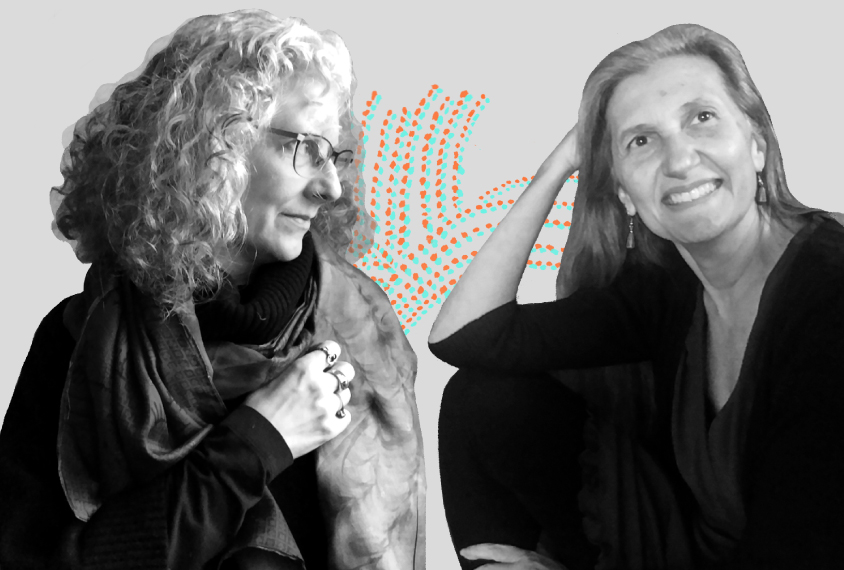
The two decided to work together, and Nicolaidis broadened her research, which focused on healthcare access for certain marginalized groups, to include access for people with autism. That same year, they co-founded the Academic Autism Spectrum Partnership in Research and Education (AASPIRE) to encourage the inclusion of autistic people in autism research. (Raymaker earned a Ph.D. in systems science in 2015; Nicolaidis co-chaired the dissertation committee.) In one of AASPIRE’s first projects, the team studied healthcare delivery to autistic adults, using an autism-friendly process that allowed multiple modes for answers to their survey: phone, email, instant messenger or in-person. They also encouraged participants to bring a support person to interviews.
The responses revealed, among other issues, that interactions with doctors can be problematic. Clinicians may refuse to communicate in writing when asked to do so, or they may talk to a family member rather than directly with the autistic person. Raymaker and Nicolaidis used the findings to build a healthcare tool kit for autistic people, their families and healthcare providers. One part of the kit allows a user to create a report of a person’s accommodations and ability to speak, read and write, for example. In a pilot study, autistic people reported fewer barriers, more self-confidence and more satisfaction in their interactions with doctors after using the tool kit. The team is also developing accessible surveys to assess how well interventions work for autistic people. An efficacy trial is forthcoming.
Working with autistic people to adapt such surveys — preventing issues like those in the ‘daydream’ study — is crucial for any researcher to collect accurate data about autism, Nicolaidis and Raymaker say. Otherwise, participants’ answers may not correctly reflect their experiences, or they may drop out of a study in frustration, biasing study samples toward participants who need fewer accommodations. “We could be getting, I think, really dangerous results,” Nicolaidis says. “This is a real issue for the traditional research that we’re doing on autism if our instruments aren’t reliable.”
The researchers are using similar methods to define and understand ‘autistic burnout,’ a mental health issue that has been largely neglected in the field outside the autism community, according to Raymaker. “Getting anyone to recognize this or take it seriously or think it’s something that’s not just depression has been a nonstarter,” Raymaker says. Raymaker, Nicolaidis and their colleagues interviewed 19 autistic adults and reviewed social media posts on the topic. In a study published last year, they described how burnout is likely to arise: Autistic people are often overtaxed just from trying to get by in a neurotypical world, such that additional stressors can tip them into this mental state, which is marked by exhaustion, increased sensory sensitivity and a loss of skills and independence.
Raymaker and Nicolaidis now codirect AASPIRE, which is widely considered a model for collaborative research in autism, says David Mandell, professor of psychiatry and pediatrics at the University of Pennsylvania. The pair also launched the journal Autism in Adulthood, which debuted in 2019 as the first journal focused solely on autistic adults. Their practice of listening to autistic people has underscored “the desperate need for better primary care to improve health outcomes and quality of life in general,” Mandell says.
The work with Raymaker and other autistic research partners has proved so fruitful for Nicolaidis that autism has moved from a side interest to the central focus of her career. The two granted each other access to new communities, they say: Nicolaidis helped Raymaker earn credibility in the often rigid academic world, and other autistic partners were more open to working with Nicolaidis with Raymaker on board. “The data we get from our participants is richer and more valuable for the trust that they have in us,” Raymaker says. “They are willing to say things to me and to us because we have a long history of building trust with the community.”
Culture change:
B
ack in 1995, in an empty classroom at the University of Tokyo in Japan, undergraduate student Shin-ichiro Kumagaya started a Japanese sign language group after learning that the university did not offer a course. He is not deaf, but he has cerebral palsy, and his work on human rights for people with disabilities prompted him to want to learn to sign. One of the instructors he brought in was a student at another university named Satsuki Ayaya, who has some speech difficulties and often uses sign language to communicate. The two met in the group weekly for two years until Ayaya finished her undergraduate degree in 1997.Nearly a decade later, in 2005, Ayaya happened upon an autistic woman’s autobiography at a bookstore, and the story reminded her of herself. She reached out to Kumagaya — by then a doctor — to ask him to recommend a medical professional who could evaluate her. In 2006, at age 31, she was diagnosed with autism. But she had trouble relating the diagnosis to some of her problems — for example, her difficulty recognizing the sensation of hunger. She started to note how and when these problems cropped up in her daily life. “I felt compelled to study myself,” she says.
Kumagaya encouraged her, and her reflections became the start of a collaboration rooted in a method known in Japan as Tojisha-Kenkyu, in which people study their conditions by observing their own experiences: Tojisha, or ‘individuals with hardship,’ conduct Kenkyu, or ‘research.’ It originated as a practice in 2001 at the Bethel House, a Hokkaido-based home for people with psychiatric conditions. “Tojisha-Kenkyu emerged among people who were forced to recognize unknowns in their challenging reality,” Ayaya says. Ayaya used the process to understand her own emotions and sensations as a way of expanding and refining the concept of autism.
Ayaya’s precise descriptions of her sensory experiences — written words “flickering” as their letters crumble into bars and curves on the page, her own voice echoing back to her from the walls of a lecture hall — have formed the basis of research questions about speech and sensory sensitivities in people with autism that she pursues with Kumagaya, who is now associate professor of Tojisha-Kenkyu at the University of Tokyo. (The two are also a couple.) In research published in 2016, they reported that autistic people’s sense of their bodies and personal space is different from that of non-autistic people’s.
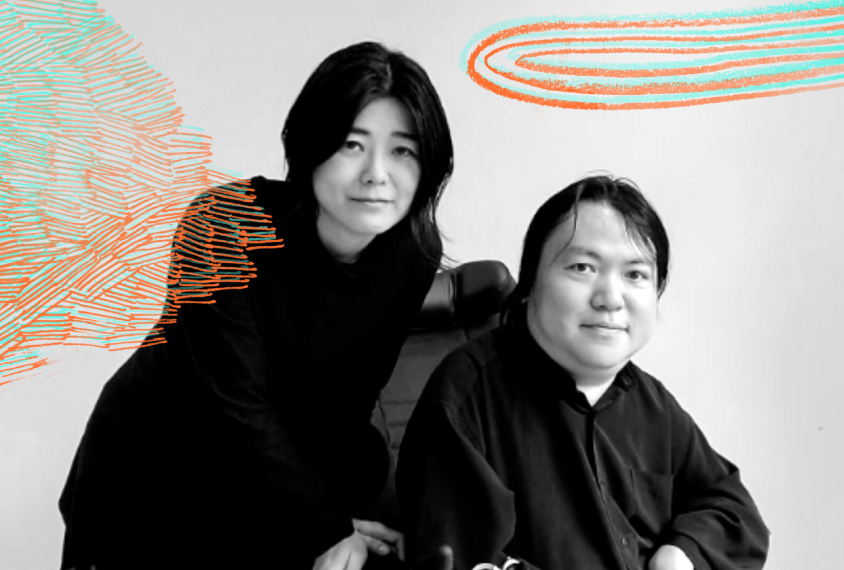
Ayaya and Kumagaya have also developed an ‘autism simulator’ that uses cameras, microphones and a headset to mimic the sensory experience of autism, enabling non-autistic researchers to better understand the condition and ultimately offer better supports; in an unpublished study, they found that using the simulator reduces researchers’ stigma toward autistic people. And Ayaya’s insights lend credence to an emerging theory called ‘predictive coding,’ which posits that some of autism’s defining traits emerge from the way the brain resolves discrepancies between what it predicts will happen and the sensory information it receives.
In 2011, Ayaya began hosting meetings in which people with autism or related conditions discuss their experiences with sensory sensitivities, ruminative thinking and relationships, among other topics. Each session is recorded; so far, more than 2,600 people have participated. Ayaya and Kumagaya have just begun analyzing the data, which they plan to use to create guidelines for autism support groups and ease the isolation many people with autism feel.
Last March, Ayaya earned her Ph.D. in history and philosophy of science — her thesis chronicled the history of Tojisha-Kenkyu — and the following month, she and Kumagaya launched a five-year plan to create a research campus at the University of Tokyo designed for people with disabilities and other marginalized groups. They plan to set up laboratories with remote access and the ability to automate elements of research that may be difficult for some people, such as pipetting. As part of the project, which the university is funding, they are teaching students and faculty about Tojisha-Kenkyu, to create an academic culture that is less competitive and more open to self-awareness and collaboration. “Everyone has some kind of difficulties or hardships, even if she has no disabilities,” Kumagaya says. “We have to change not only physical environments, but also cultural environments.”
Ayaya and Kumagaya are also hiring autistic researchers to study autism using the principles of Tojisha-Kenkyu. One is investigating how to make workplace culture more accessible for people with autism. Another, who has a hearing impairment, is working with Ayaya to apply technologies for the deaf to autistic people. Kumagaya says his long partnership with Ayaya has helped him understand the inner experiences behind autistic people’s behaviors, making him a more empathetic pediatrician. Sometimes, he says, autistic children are surprised by how much he seems to understand them.
The pair has helped shift Japan’s research culture to the extent that other scientists are “almost mesmerized” by them, says Atsushi Senju, reader in social neuroscience at Birkbeck, University of London in the United Kingdom. They have brought the idea of consulting with autistic people to the fore, motivating researchers to explore the subjective experience of the condition, he says. And many are increasingly interested in shaping their research around the questions that are important to autistic people. Colleagues who worked in basic biology, Senju says, are “suddenly talking about participation” from autistic individuals.
Trial run:
I
n 2009, several years after Valerie Paradiz had been diagnosed with autism, she attended a meeting hosted by a drug company developing a medical test for autistic people that involved a cheek swab. Company officials wanted to know how they could make the process more comfortable for people with autism. To that end, they had reached out to the nonprofit Autism Society, where Paradiz sat on the board of directors. She volunteered to help.Soon after that meeting, Paradiz — now vice president of services and supports at the advocacy organization Autism Speaks — joined a community advisory board for a different drug company as a volunteer, offering guidance on working with autistic people. In 2017, she began working with the company as a paid consultant. She traveled as often as once a month to clinical trial and community sites to educate people in the autism community about how clinical trials work and to act as their liaison with study clinics. (Citing nondisclosure agreements, Paradiz declined to reveal which companies or trials she has assisted.)
In her role, Paradiz suggested adding pictures to clarify written procedures — say, icons that illustrate whether a medical appointment is supposed to take place in an office or by phone — and depicting what might happen at the visit (a blood draw, an imaging test) to reduce anxiety. She has also recommended using remote visits and wearable devices to collect data outside of the clinic, as many autistic people find the sensory stimuli in doctor’s offices overwhelming. She pointed out important logistical considerations: Easy parking can lower stress, as can minimizing the time a child needs to be in a crowded waiting room. Practical problems like these can determine whether a person will quit or stick with the trial.
Some of these ideas could improve retention and adherence in various types of clinical trials. Chief among them, Paradiz says, are some tips she offered for helping people navigate the process of ‘informed consent’ — in which participants must sign documents that describe how their data will be collected, handled and protected. Her suggestions include reading parts of the documents aloud, adding visuals to documents and allowing time for participants to ask questions. “An improvement for us — meaning those of us who are autistic or neurodiverse — could lead to a really universal design improvement for many people,” she says.
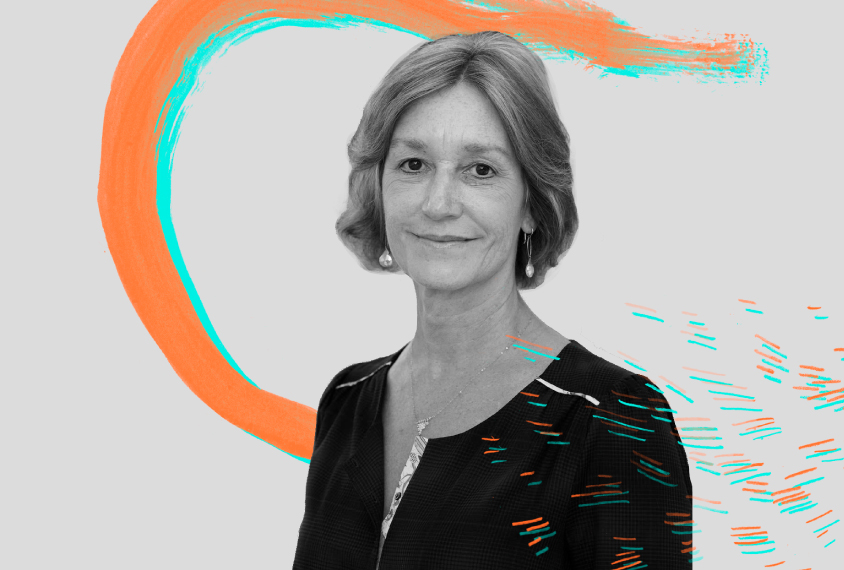
Autistic consultants for clinical trials are also critical for helping companies understand which measurements matter most to autistic people — improved sleep, for example — and what kinds of treatments people with autism would actually be interested in using, says Jeremy Veenstra-VanderWeele, professor of psychiatry at Columbia University. “It is very important to consult with autistic people in order to design trials of treatments that target meaningful outcomes and improve quality of life,” he says.
Paradiz needs her own supports, too. She sometimes asks company officials to call her to summarize email threads to be sure she catches the relevant details. She also plans a day of rest between large meetings, as she finds them exhausting. But the effort is worth it, she says, if she can pave the way to well-designed trials for drugs that benefit autistic people. “We don’t have enough [medication] options yet,” she says. And the only way to create good options is to enlist autistic people in the process. “You really can’t develop something for us if you don’t involve us,” she says.
Exploring gender:
I
n 2017, Reid Caplan was working as a program coordinator at the Autistic Self Advocacy Network when their supervisor, executive director Julia Bascom, made an introduction that would catapult Caplan, who is autistic and transgender, into a second career. (Caplan uses a gender-neutral pronoun.) Bascom introduced Caplan to John Strang, who directs the gender and autism program at Children’s National Hospital in Washington, D.C. She thought Caplan could help Strang with a project on the experiences of autistic people who are gender-diverse — those whose gender identities do not align with the sex they were assigned at birth.That first meeting sparked a collaboration. For their first project, Strang and Caplan surveyed 22 autistic, gender-diverse adolescents, asking them about their earliest thoughts about their gender and how they envisioned their future. Caplan helped interpret the responses, including offering an understanding about autistic people’s unique experiences with ‘transitioning’ — changing one’s outward gender presentation — which often involves treatment with hormones or surgery. An autistic trans girl, for example, may not opt to look like a stereotypical girl, Caplan says — she may not change her wardrobe because she finds her clothes comfortable, or she may shun makeup because of motor issues. Earlier drafts of the paper had not addressed how such factors could lead doctors to deny autistic people gender-affirming medical care; that changed with Caplan’s feedback. “For autistic people, there’s reasons why we might not choose to even try to meet those standards,” Caplan says.
Since that project, Caplan and Strang have co-authored three additional papers and are working on a new project about autistic transgender young adults in the United States and the Netherlands. For their most recent paper, published in May 2020, they analyzed feedback from 31 neuro- and gender-diverse young people and their parents about their clinical and support preferences and needs. A total of 10 other neuro- or gender-diverse adults and 10 healthcare providers worked with Strang and Caplan, among others, to summarize the findings and come up with recommendations for neuro- and gender-diverse people’s healthcare. “We don’t want to just have a community partnership where we’re learning from the community,” Strang says. “We want them to shape and own the final project.” The paper has more than 30 authors.
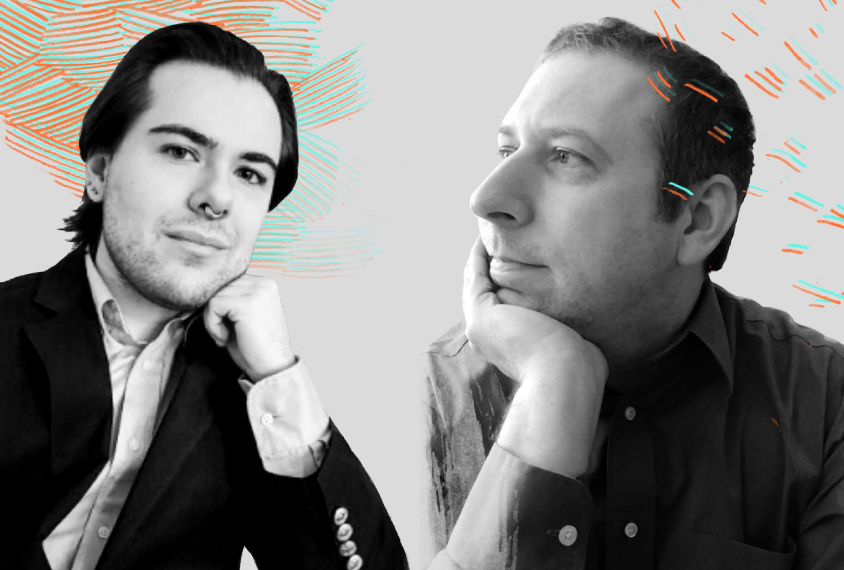
Strang makes a huge effort to recruit new community members to his research circle. Last summer, as part of a new grant from the Organization for Autism Research, a researcher on his team spent hundreds of hours scouring social media platforms for autistic and transgender people who might be valuable contributors to the team’s work. “As a researcher, you’re not just someone who should be on the outside looking in,” says Caplan, who is now pursuing a Ph.D. in social policy at Brandeis University in Waltham, Massachusetts.
The results of this effort are helping clinicians become more accepting of both different gender identities and neurodiversity, says Finn Gratton, a psychotherapist who is autistic and nonbinary. “This is of enormous benefit to the many people who are both autistic and transgender [or] nonbinary that have long been oppressed and misunderstood by the medical and mental health community,” Gratton says.
Caplan and Strang’s collaborative approach is also important for removing biases that cast departures from neurotypical or gender norms in a negative light. “I think their partnership, and the ideas it embodies about how autism research can and should be done, is transformative,” Bascom says.
For Strang, working with Caplan and other trans autistic people has made him more open with families about what researchers do and don’t know about autism’s intersections with gender. He is also more confident now that his research will yield something useful to the community. “It’s frightening to me now to think of all of the work that was done without asking whether this was important or helpful to the people who were part of that work,” Strang says.
Combating stigma:
I
n January 2019, Dorota Chapko interviewed for a job as a postdoctoral researcher at Heart n Soul at The Hub at Wellcome Collection in London, a research arm of an arts collective for people with autism or intellectual disability. The data scientist — she has a Ph.D. in public health — would be analyzing data for a project alongside adults with these conditions.Chapko did not know a lot about either autism or intellectual disability. But Robyn Steward, an autistic person working on the project, appreciated her experience working with people from different cultures. Chapko had organized events in which researchers interviewed hundreds of people in communities in Scotland and two cities in India about their experiences participating in a longitudinal health study. Steward thought that experience would translate well to this new population. And she liked Chapko’s openness to an office culture such as the one at Heart n Soul at The Hub that has no clear hierarchy. Chapko started working with Steward two months later.
One of their projects, called Heart n Soul Asks, is a multimedia survey for the general public co-created with seven adults who are autistic, have intellectual disability, or both. It is designed to explore the gap between the positive things people say about individuals with disabilities and the stigma and isolation people with disabilities experience. The survey features videos of the co-researchers with disabilities asking questions such as “Do you trust us?” and “Are you frightened of people with learning disabilities?” Steward and the team hope to come up with an honest appraisal of public attitudes and use the information to improve the quality of life of people with disabilities. The team is also pioneering a new type of collaborative work. “It was a very new idea for me,” Chapko says. “But I got very inspired by the ethos of the project.”
The survey accepts answers in various formats — handwriting, speech, images and video — which broadens its reach but also presents a data-analysis challenge. Chapko uses machine learning to translate the qualitative answers into data, working closely with the co-researchers to interpret meaning, particularly for answers that do not contain words. So far, they have more than 1,500 responses. “It’s quite empowering because often people with learning disabilities aren’t listened to in a meaningful way in a research context,” Steward says.
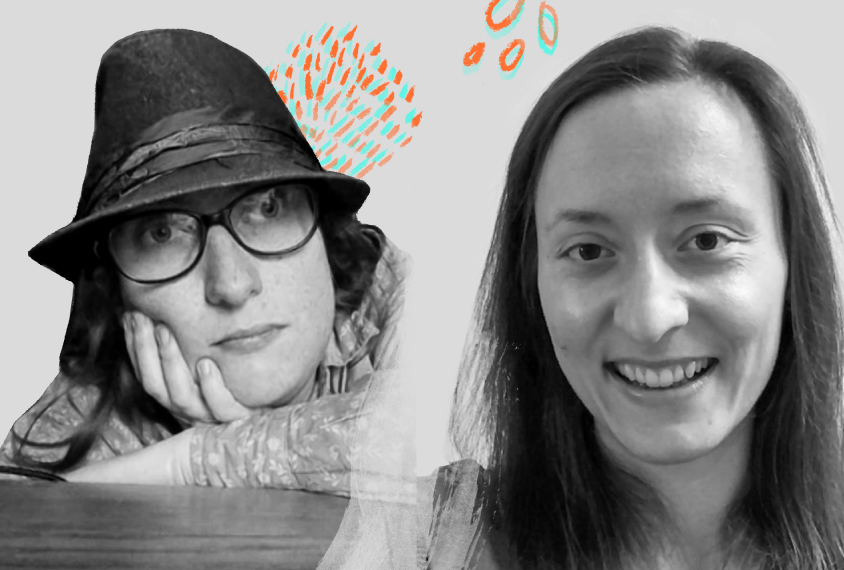
In April 2020, the team described the strategies they used in designing the survey, including using videos to help explain the informed-consent process and allowing some questions to have open-ended answers. In May, they presented their work (virtually) at CHI 2020, an international conference on human-computer interaction whose attendees have in the past included Google and NASA.
The project underscores the value of involving people with disabilities in research, says Chrissie Rogers, professor of sociology at the University of Kent in the U.K. And the creative use of multimedia is likely to influence how researchers collect, share and discuss their data in the future, she says. Rogers acted as an outside consultant on the survey and plans to collaborate with Steward’s team on their next study, which will evaluate how people with disabilities navigate the healthcare system. The Heart n Soul team’s work has “been a platform and a springboard into a much bigger project,” she says.
The team’s ethos is reflected in its physical home in central London. Their space emphasizes visual information, including a wall-mounted meeting schedule with personalized avatars instead of names — Chapko’s basketball player is a nod to an earlier hobby, and Steward’s is a purple R topped with a graphic of her trademark trilby hat. Their approach has spread: Anyone who wants to apply for funding at The Hub can now do so with just a video and a short written statement, and top applicants can visit the space ahead of in-person interviews to get comfortable with the surroundings.
Chapko says she sees Steward as the “bridge” between the academic scientists and the non-academic researchers, whose expertise lies in their own lived experiences. “We would be stuck on something, and I would be like, ‘Okay, this is the time to talk to Robyn,’” Chapko says. For her part, Steward appreciates Chapko’s ability to analyze data and how well she fits into their somewhat nontraditional workplace. “I can’t imagine a time without Dorota,” Steward says. “In my mind, Dorota’s always been there.”
Syndication
This article was republished in The Scientist.
Recommended reading

Ramping up cortical activity in early life sparks autism-like behaviors in mice
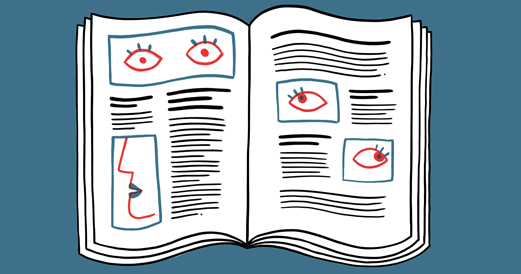
New method identifies two-hit genetic variation in autism; and more
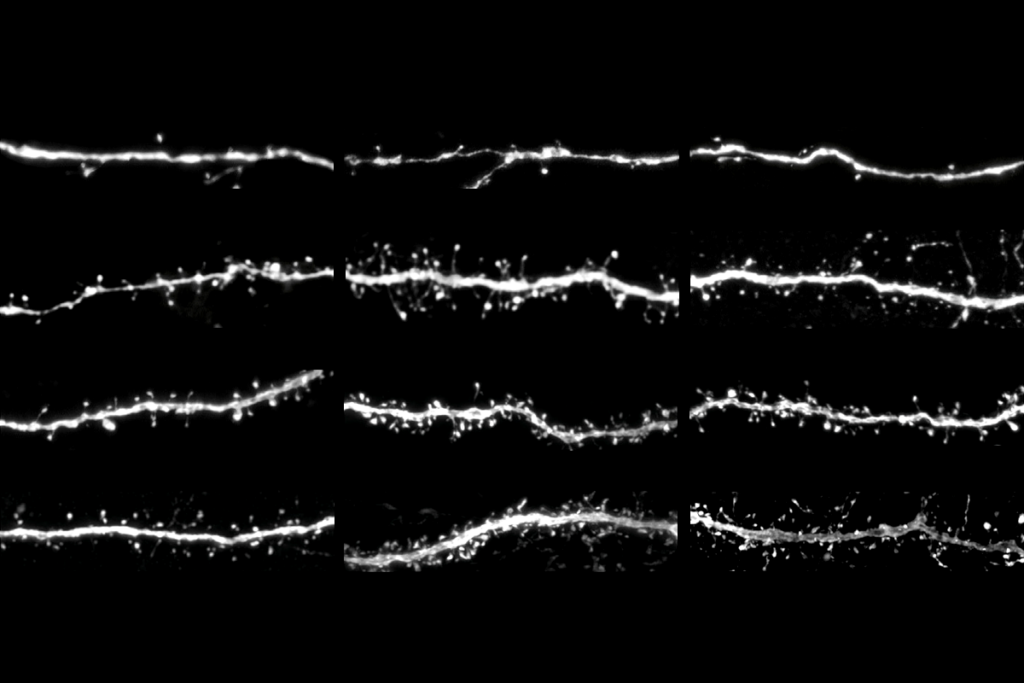
Protein tug-of-war controls pace of synaptic development, sets human brains apart
Explore more from The Transmitter
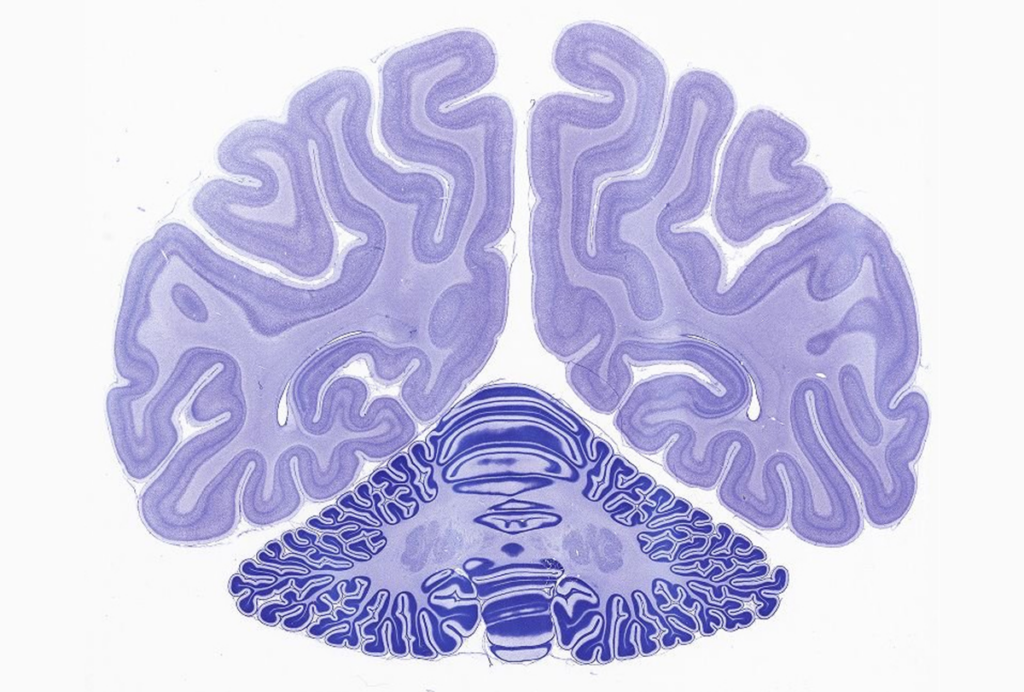
Nonhuman primate research to lose federal funding at major European facility
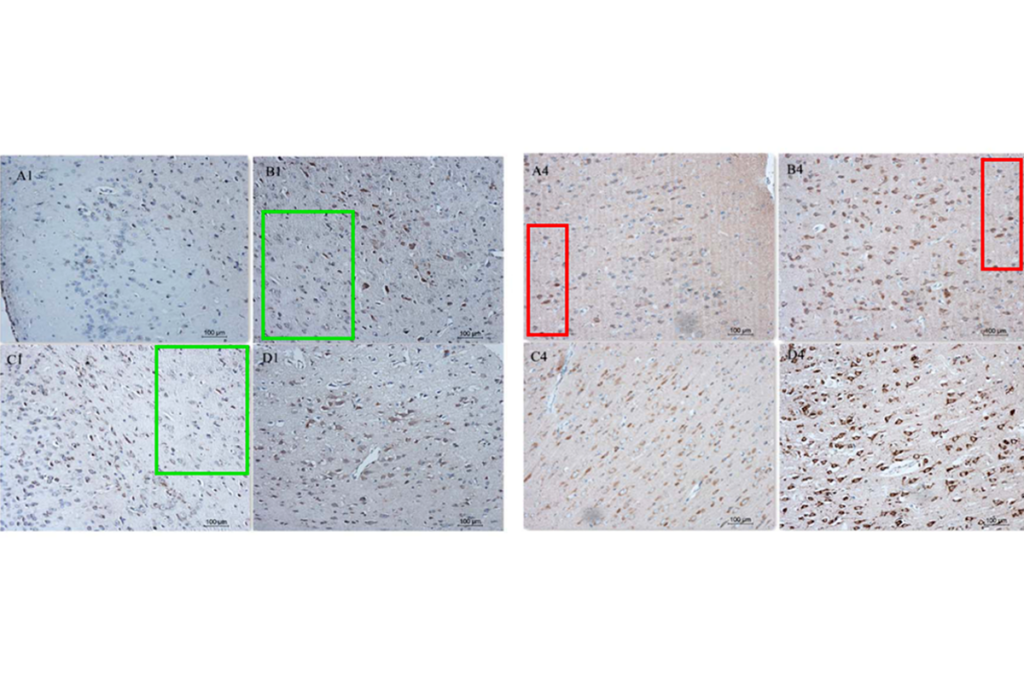
Image integrity issues create new headache for subarachnoid hemorrhage research
